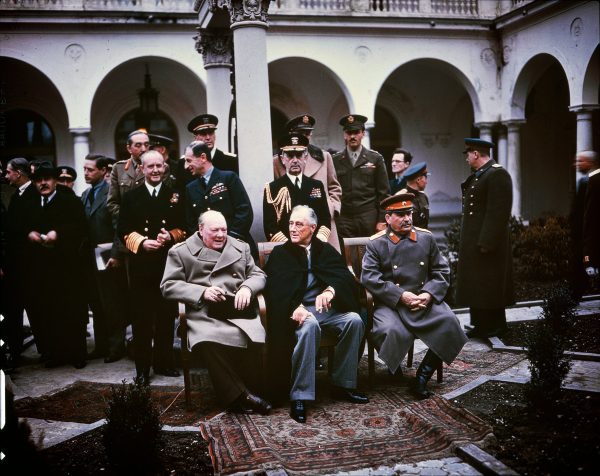80 Years Ago, the Soviets Occupied Japan’s Northern Territories – With US Support

Eight decadess ago, on April 16, 1945, special training for a top-secret joint military operation between the United States and the Soviet Union began in Cold Bay, Alaska, in preparation for the Soviet Union's entry into the war against Japan. The operation was code-named “Project Hula.” Four months later, with this massive military assistance from the U.S., the Soviet Union landed on the Kuril Islands, including the four southernmost islands called the Northern Territories by the Japanese, as well as southern Sakhalin, and occupied all of them. In the eight decades since, Tokyo and Moscow have failed to solve the thorny issue of Japan’s claim to the Northern Territories, also known in Russia as the Southern Kurils, which consist of three islands – Kunashiri, Etorofu and Shikotan – and the uninhabited Habomai group of islets (usually also spoken of as a singular island). The two sides have not concluded a peace treaty since the end of World War II mainly due to this unsolved territorial dispute. The Legacy of Yalta The root cause of this territorial dispute is a secret agreement made in Yalta. In February 1945, toward the end of World War II, the leaders of the three Allied powers – U.S. President Franklin D. Roosevelt, British Prime Minister Winston Churchill, and Soviet Premier Josef Stalin – met in Yalta on the Crimean Peninsula. They agreed that the Soviet Union would renounce the Japan-Soviet Neutrality Pact that it had concluded in April 1941 and enter the war against Japan, in return for which the Soviet Union would gain control over the Kuril Islands and southern Sakhalin, which had been Japanese territory. Immediately after the outbreak of war between Japan and the United States in December 1941, Washington had repeatedly asked the Soviet Union to enter the war against Japan. It also asked for a base in Siberia so that U.S. military aircraft could bomb Japan. At the time of the Yalta Conference, the United States was secretly developing an atomic bomb, but there was no sign of its completion. Military planners thought it was necessary to drag the Soviet Union into the war against Japan in order to minimize U.S. casualties in the battle for the Japanese mainland. Stalin first announced his intention to enter the war against Japan after defeating Germany at a dinner meeting of the foreign ministers of the United States, Britain, and the Soviet Union held in Moscow in October 1943. At the Yalta Conference, the U.S. and Britain agreed to honor Soviet sovereignty over the Kuril Islands and South Sakhalin, as well as Soviet interests in Manchuria, as the conditions for the Soviet Union's entry into the war against Japan. Stalin thus agreed to join the Allies in entering the war against Japan two or three months after Germany's surrender. In negotiations with Japan over the Northern Territories/Southern Kurils dispute, Russia, the successor state to the Soviet Union, has cited the Yalta Agreement and claimed that its sovereignty over the four islands is “in accordance with international law.” Tokyo has countered that the Yalta Agreement was a secret deal between the Americans, the Soviets, and the British and has no legal basis. Tokyo’s position is that the four islands are inherent Japanese territory and were “illegally occupied” by the Soviet Union, which unilaterally abrogated the Japan-Soviet Neutrality Pact. Project Hula In fact, there was another important facet to the secret agreement reached at the Yalta Conference. The United States promised to provide special military support to the Soviet Union in order to convince it to enter the war against Japan. It put into action a top-secret operation called “Project Hula,” launched by the United States and the Soviet Union immediately after the Yalta Conference. In 1997, Richard A. Russell, who had served as a specialist 5 in the U.S. Army and as a second lieutenant in the Army National Guard, published a book titled “Project Hula: Secret Soviet-American Cooperation in the War Against Japan” with the U.S. Naval Historical Center in Washington. The full text is also available for free online. According to Russell’s book, the U.S. Navy transferred a total of 149 ships to the Soviet Union free of charge to support its occupation of southern Sakhalin and the Kuril Islands. The vessels included 55 minesweepers, 30 large infantry landing craft, 28 frigates and 32 submarine chasers. The U.S. Navy originally planned to transfer 180 vessels before November 1, 1945. Furthermore, according to the book, the U.S. Navy gathered 12,000 Soviet soldiers at a U.S. military base in Cold Bay, Alaska, near the tip of the Alaskan Peninsula in the Aleutian Islands, and provided training in shipping, radar, radio communications, sonar, engineering, mine removal, and more. The United States held training exercise for Russians, who used the U.S. Navy ships scheduled for transfer to the Soviet Pacific Ocean Fleet. About 1,500 U.S. soldiers were stationed at Cold Bay to instruct the Soviet troops. [caption id=attachment_286950 align=aligncenter width=1192] The Soviet naval ensign is raised aboard large infantry landing craft at Cold Bay, Alaska, as they are commissioned into the Soviet Navy immediately after their decommissioning by the United States Navy and transfer to the Soviet Union as a part of Project Hula, June 9, 1945. United States Navy photo via National Archives[/caption] In the introduction of his book, Russell pointed out that Project Hula was part of the Lend-Lease program, under which the United States actively supported the Allied powers against the Axis of Japan, Germany, and Italy. He described this top-secret joint U.S.-Soviet operation as “the largest and most ambitious transfer program of World War II.” The Soviet side of the operation continued even after Japan accepted the Potsdam Declaration of the Allied Powers on August 14, 1945. The Soviet military occupied the four islands of the Northern Territories from August 28 to September 5, using American ships in its landing and occupation operation. Here is truly an irony of history: Throughout the Cold War, Japan became a staunch U.S. ally, while the Soviet Union – the same military the United States had helped invade Japanese soil – became Washington’s primary foe. In the foreword tof Russell’s book, William S. Dudley, director of the U.S. Naval Institute’s Naval History magazine, praised the book for bringing to light “a little known aspect of lend-lease and of Soviet-American relations at the end of the Second World War.” Project Hula is an important historical fact that has had a huge impact on modern Japanese history. However, perhaps because it was buried in history for a long time after the war, it is still not well known in Japan and elsewhere. One major reason for this is that during the Soviet era, materials related to Japan's Showa era history were difficult to obtain. Many Japanese historians had had a hard time accessing such historical documents during the Soviet era. These events only gradually began to become known after the Soviet Union dissolved and Russia democratized. Another reason for the historical amnesia is that the events after the war overtook Project Hula very quickly. In August 1956, when Japanese Foreign Minister Shigemitsu Mamoru met with U.S. Secretary of State John Foster Dulles in London, Dulles insisted that Japan should not accept the partial return of the Northern Territories. If Japan concluded a peace treaty with the Soviet Union by returning only the two islands of Habomai and Shikotan, Dulles threatened that Washington would make Okinawa – then occupied by the U.S. military – a permanent U.S. territory. In other words, the U.S. provided military support for the Soviet occupation of the four islands of the Northern Territories, but after the war, Washington insisted that Japan must demand the return of all four islands, rather than comprising and ceding its claim to two of them. In the Yalta Agreement, the United States agreed to recognize Soviet sovereignty over the Kuril Islands and South Sakhalin in return for the Soviet Union's entry into the war against Japan. And during the Cold War, the U.S. thought that having Japan insist on the return of the four islands of the Northern Territories/Southern Kurils would be a good way to divide Japan and the Soviet Union. This is a brilliant example of American two-faced diplomacy. It’s clear that the Northern Territories issue – which remains unresolved today – was heavily influenced by the actions of the United States, which pursued its own interests at any given time. Lessons for Ukraine History is cruel. The division of a country by a great power leaves people with deep sorrow and wounds that will last forever. Behind the machinations and negotiations between the great powers, many local residents have always been sacrificed. The former Japanese residents of the Northern Territories, whose average age is over 89 years old, continue to be tossed about between history and the nation. Ukrainians could be the next such victims, as U.S. President Donald Trump is pushing Ukrainian President Volodymyr Zelenskyy hard to accept a peace deal with Russia by ceding its claim to Ukrainian territory. Witnessing the imperialistic actions of the United States and Russia, which ruthlessly pursue a great power-centrism that shows no mercy to smaller countries such as Ukraine and Japan, we must pass on the facts and lessons of Project Hula to future generations.

















